Chrysler 2010 Annual Report Download - page 318
Download and view the complete annual report
Please find page 318 of the 2010 Chrysler annual report below. You can navigate through the pages in the report by either clicking on the pages listed below, or by using the keyword search tool below to find specific information within the annual report.-
 1
1 -
 2
2 -
 3
3 -
 4
4 -
 5
5 -
 6
6 -
 7
7 -
 8
8 -
 9
9 -
 10
10 -
 11
11 -
 12
12 -
 13
13 -
 14
14 -
 15
15 -
 16
16 -
 17
17 -
 18
18 -
 19
19 -
 20
20 -
 21
21 -
 22
22 -
 23
23 -
 24
24 -
 25
25 -
 26
26 -
 27
27 -
 28
28 -
 29
29 -
 30
30 -
 31
31 -
 32
32 -
 33
33 -
 34
34 -
 35
35 -
 36
36 -
 37
37 -
 38
38 -
 39
39 -
 40
40 -
 41
41 -
 42
42 -
 43
43 -
 44
44 -
 45
45 -
 46
46 -
 47
47 -
 48
48 -
 49
49 -
 50
50 -
 51
51 -
 52
52 -
 53
53 -
 54
54 -
 55
55 -
 56
56 -
 57
57 -
 58
58 -
 59
59 -
 60
60 -
 61
61 -
 62
62 -
 63
63 -
 64
64 -
 65
65 -
 66
66 -
 67
67 -
 68
68 -
 69
69 -
 70
70 -
 71
71 -
 72
72 -
 73
73 -
 74
74 -
 75
75 -
 76
76 -
 77
77 -
 78
78 -
 79
79 -
 80
80 -
 81
81 -
 82
82 -
 83
83 -
 84
84 -
 85
85 -
 86
86 -
 87
87 -
 88
88 -
 89
89 -
 90
90 -
 91
91 -
 92
92 -
 93
93 -
 94
94 -
 95
95 -
 96
96 -
 97
97 -
 98
98 -
 99
99 -
 100
100 -
 101
101 -
 102
102 -
 103
103 -
 104
104 -
 105
105 -
 106
106 -
 107
107 -
 108
108 -
 109
109 -
 110
110 -
 111
111 -
 112
112 -
 113
113 -
 114
114 -
 115
115 -
 116
116 -
 117
117 -
 118
118 -
 119
119 -
 120
120 -
 121
121 -
 122
122 -
 123
123 -
 124
124 -
 125
125 -
 126
126 -
 127
127 -
 128
128 -
 129
129 -
 130
130 -
 131
131 -
 132
132 -
 133
133 -
 134
134 -
 135
135 -
 136
136 -
 137
137 -
 138
138 -
 139
139 -
 140
140 -
 141
141 -
 142
142 -
 143
143 -
 144
144 -
 145
145 -
 146
146 -
 147
147 -
 148
148 -
 149
149 -
 150
150 -
 151
151 -
 152
152 -
 153
153 -
 154
154 -
 155
155 -
 156
156 -
 157
157 -
 158
158 -
 159
159 -
 160
160 -
 161
161 -
 162
162 -
 163
163 -
 164
164 -
 165
165 -
 166
166 -
 167
167 -
 168
168 -
 169
169 -
 170
170 -
 171
171 -
 172
172 -
 173
173 -
 174
174 -
 175
175 -
 176
176 -
 177
177 -
 178
178 -
 179
179 -
 180
180 -
 181
181 -
 182
182 -
 183
183 -
 184
184 -
 185
185 -
 186
186 -
 187
187 -
 188
188 -
 189
189 -
 190
190 -
 191
191 -
 192
192 -
 193
193 -
 194
194 -
 195
195 -
 196
196 -
 197
197 -
 198
198 -
 199
199 -
 200
200 -
 201
201 -
 202
202 -
 203
203 -
 204
204 -
 205
205 -
 206
206 -
 207
207 -
 208
208 -
 209
209 -
 210
210 -
 211
211 -
 212
212 -
 213
213 -
 214
214 -
 215
215 -
 216
216 -
 217
217 -
 218
218 -
 219
219 -
 220
220 -
 221
221 -
 222
222 -
 223
223 -
 224
224 -
 225
225 -
 226
226 -
 227
227 -
 228
228 -
 229
229 -
 230
230 -
 231
231 -
 232
232 -
 233
233 -
 234
234 -
 235
235 -
 236
236 -
 237
237 -
 238
238 -
 239
239 -
 240
240 -
 241
241 -
 242
242 -
 243
243 -
 244
244 -
 245
245 -
 246
246 -
 247
247 -
 248
248 -
 249
249 -
 250
250 -
 251
251 -
 252
252 -
 253
253 -
 254
254 -
 255
255 -
 256
256 -
 257
257 -
 258
258 -
 259
259 -
 260
260 -
 261
261 -
 262
262 -
 263
263 -
 264
264 -
 265
265 -
 266
266 -
 267
267 -
 268
268 -
 269
269 -
 270
270 -
 271
271 -
 272
272 -
 273
273 -
 274
274 -
 275
275 -
 276
276 -
 277
277 -
 278
278 -
 279
279 -
 280
280 -
 281
281 -
 282
282 -
 283
283 -
 284
284 -
 285
285 -
 286
286 -
 287
287 -
 288
288 -
 289
289 -
 290
290 -
 291
291 -
 292
292 -
 293
293 -
 294
294 -
 295
295 -
 296
296 -
 297
297 -
 298
298 -
 299
299 -
 300
300 -
 301
301 -
 302
302 -
 303
303 -
 304
304 -
 305
305 -
 306
306 -
 307
307 -
 308
308 -
 309
309 -
 310
310 -
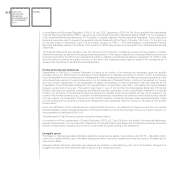 311
311 -
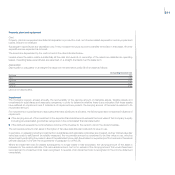 312
312 -
 313
313 -
 314
314 -
 315
315 -
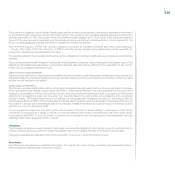 316
316 -
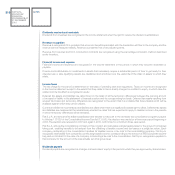 317
317 -
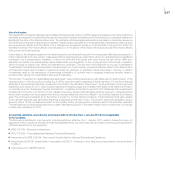 318
318 -
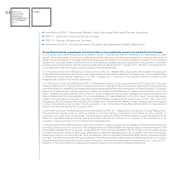 319
319 -
 320
320 -
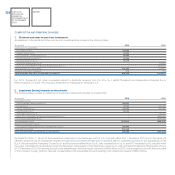 321
321 -
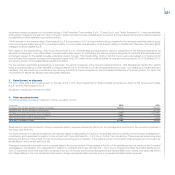 322
322 -
 323
323 -
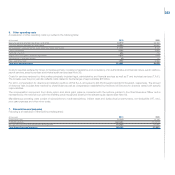 324
324 -
 325
325 -
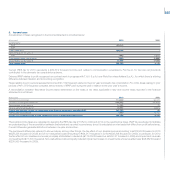 326
326 -
 327
327 -
 328
328 -
 329
329 -
 330
330 -
 331
331 -
 332
332 -
 333
333 -
 334
334 -
 335
335 -
 336
336 -
 337
337 -
 338
338 -
 339
339 -
 340
340 -
 341
341 -
 342
342 -
 343
343 -
 344
344 -
 345
345 -
 346
346 -
 347
347 -
 348
348 -
 349
349 -
 350
350 -
 351
351 -
 352
352 -
 353
353 -
 354
354 -
 355
355 -
 356
356 -
 357
357 -
 358
358 -
 359
359 -
 360
360 -
 361
361 -
 362
362 -
 363
363 -
 364
364 -
 365
365 -
 366
366 -
 367
367 -
 368
368 -
 369
369 -
 370
370 -
 371
371 -
 372
372 -
 373
373 -
 374
374 -
 375
375 -
 376
376 -
 377
377 -
 378
378 -
 379
379 -
 380
380 -
 381
381 -
 382
382 -
 383
383 -
 384
384 -
 385
385 -
 386
386 -
 387
387 -
 388
388 -
 389
389 -
 390
390 -
 391
391 -
 392
392 -
 393
393 -
 394
394 -
 395
395 -
 396
396 -
 397
397 -
 398
398 -
 399
399 -
 400
400 -
 401
401 -
 402
402
 |
 |

317
Use of estimates
The preparation of financial statements and related disclosures that conform to IFRS requires management to make judgments,
estimates and assumptions that affect the reported amounts of assets and liabilities and the disclosure of contingent assets and
liabilities at the date of the financial statements. The estimates and associated assumptions are based on historical experience
and other factors that are considered to be relevant. Actual results could differ from those estimates. Estimates and assumptions
are reviewed periodically and the effects of any changes are recognized directly in profit and loss in the period in which the
estimate is revised if the revision affects only that period, or in the period of the revision and future periods if the revision affects
both current and future periods.
In this respect, the situation caused by the recent economic and financial crisis and the consequent difficulties experienced in
many markets has led to the need to make assumptions regarding future performance which are characterized by significant
uncertainty. As a consequence, therefore, it cannot be excluded that results may arise during the year which differ from
estimates, and which may subsequently require adjustments, even significant, to the carrying amount of the item(s) in question,
which obviously at present can neither be estimated nor predicted. The line item most impacted by the use of estimates is
“investments in subsidiaries and associates” included under non-current assets, where estimates are used for the determination
of impairment losses and reversals of impairment losses. No particular or significant issues have arisen, however, in relation
to estimates used for the recognition of percentage completion of contract work in progress, employee benefits, taxes or
provisions also taking into consideration their level of materiality.
The line item “investments in subsidiaries and associates” was primarily influenced by estimates used in determination of the
carrying amount of Fiat Group Automobiles S.p.A. (FGA), given the relative weighting of that investment. For the 2010 financial
statements, the investment has been measured on the basis of its estimated “value in use”. Those estimates took into account
expected performance for 2011, and the assumptions and resulting output are consistent with statements made in the Report
on Operations under “Subsequent Events and Outlook”, in addition to the Fiat Group 2010-2014 Business Plan presented to
the financial community on 21 April 2010. For valuation purposes, annual profit estimates were then reduced – using adjustment
factors that increase over the projected time horizon (as estimates become more difficult) – as a further measure of prudence,
given the continued uncertainty as to the timing of a return to normal market conditions. A theoretical terminal value (based
on an ultimate disposal) was estimated assuming a perpetual growth rate of zero. The present value was calculated using a
discount rate of 14.5%, considered prudent for the industry sector and geographic markets in which this subsidiary operates.
The estimates and underlying assumptions provided reasonable support for the determination that no writedowns or reversals
in value were necessary for 2010.
Accounting standards, amendments and interpretations effective from 1 January 2010 but not applicable
to the Company
The following amendments, improvements and interpretations, effective from 1 January 2010, relate to issues that were not
applicable to the Company at the date of these financial statements, but which may have an impact on the accounting treatment
of future transactions or arrangements:
IFRS 3 (2008) – Business combinations.
IAS 27 (2008) – Consolidated and Separate Financial Statements.
Improvement to IFRS 5 (2009) – Non-current Assets Held for Sale and Discontinued Operations.
Amendment to IAS 28 – Investments in Associates and IAS 31 – Interests in Joint Ventures consequential to the amendment
to IAS 27.
Improvements to IAS/IFRS (2009).
